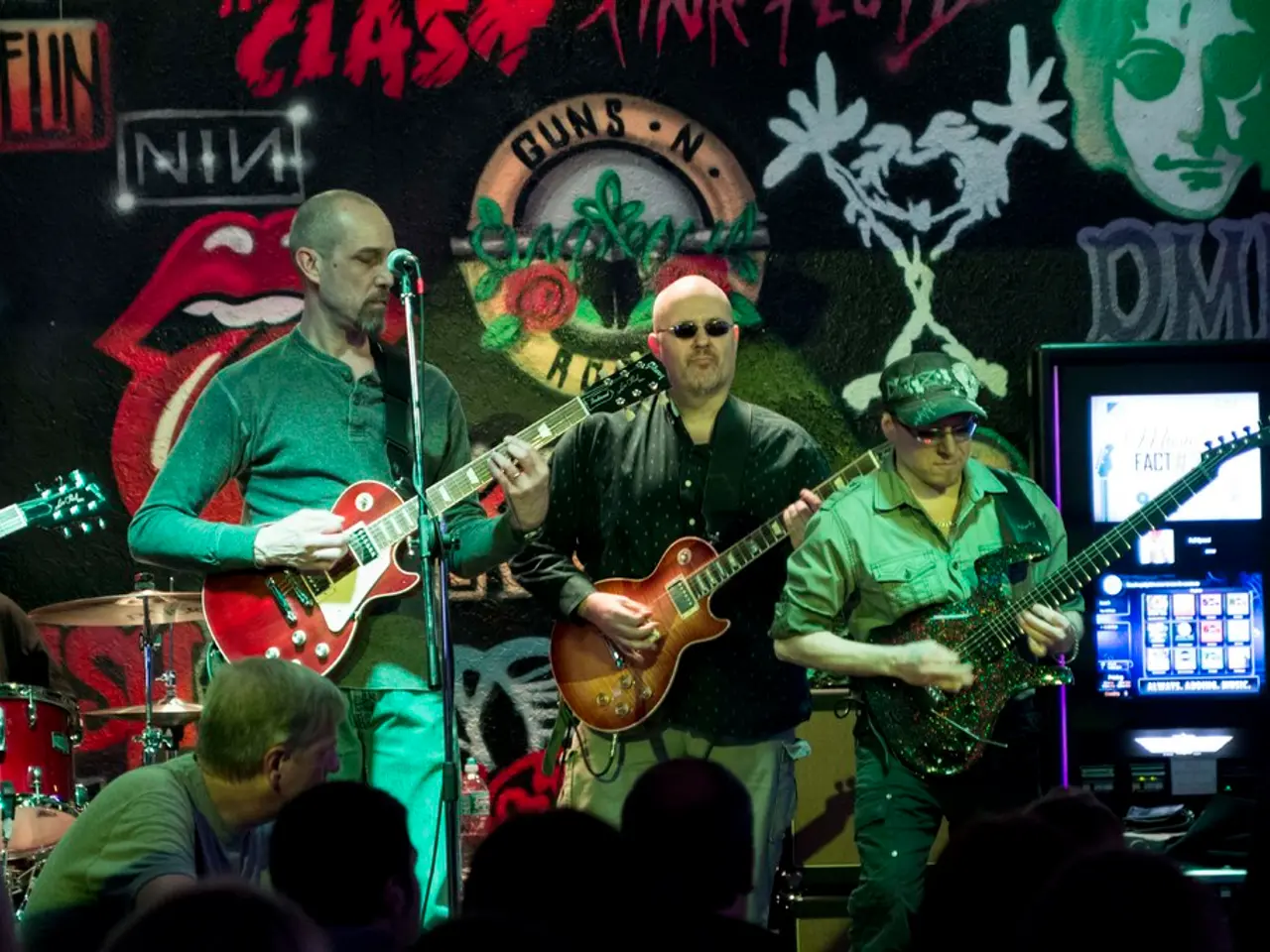Uncovered Hits: 7 Popular Tunes With Hidden Samples!
In the ever-evolving world of music, contemporary pop artists are breathing new life into the past by creatively reimagining and manipulating existing sounds from diverse musical eras. This innovative approach, known as sampling, is a dynamic fusion of technology, homage, and innovation.
The Music School, a renowned institution, offers a Music Production & Sound Engineering Degree to teach students the techniques for creating music that stands the test of time. With industry-expert instructors who have earned a prestigious Gold rating in the Teaching Excellence Framework (TEF), the school equips students with the necessary skills to navigate the intricacies of sampling.
One of the key aspects of sampling is technological innovation. Modern digital tools such as Serato Sample, stem splitters, and AI-assisted plugins enable artists to chop, isolate, repitch, and flip audio samples in novel ways, creating intricate manipulations, adding layers, and shaping samples to fit new sonic landscapes.
Cross-genre and cross-era sampling is another essential element. Producers sample from a wide range of sources, creating a bridge between past and present musical cultures. For instance, Drake's song "Nice for What" (2018) features chopped-up vocal samples from Lauryn Hill's "Ex-Factor" (1998), while Dua Lipa's "Love Again" (2022) samples a 1932 swing ballad-"My Woman" by Lew Stone & the Monseigneur Band featuring Al Bowlly.
Creative reinterpretation is another crucial factor in the sampling process. Rather than just lifting sounds, artists rework samples with effects, looping, and layering, often integrating them with original sounds. This can blur the lines between sampling, sound design, and synthesis, resulting in fresh and unique textures. Lady Gaga's "Bad Romance" (2009) showcases this technique by blending baroque influences from nearly 300 years ago with contemporary pop production.
Respect for history and legal considerations is also vital. Given complex copyright issues, some artists use interpolation—recreating a recording with permission from the music's owners—to respect legal boundaries while maintaining the spirit of the original. Examples like Lil Nas X’s "Old Town Road" show successful genre-blending through sampling and remix culture.
Modern pop artists' use of sampling is a testament to their ability to craft hits that are simultaneously fresh and deeply rooted in music history. From Drake's tribute to Lauryn Hill in "Nice for What" to Bruno Mars and Mark Ronson's fusion of funk sensibilities in "Uptown Funk", these artists are redefining the boundaries of music production.
The Music School's offerings extend beyond London, with degrees or short courses available in LA, Ibiza, and Online. Additionally, the school provides free courses, exclusive music-making tools, and tutorials through registration. Whether you're a budding artist or a music enthusiast, the Music School offers a wealth of resources to explore the art of sampling and contribute to the ongoing evolution of music.
References:
- The Verge
- Rolling Stone
- Pitchfork
- Billboard
- NPR
- The Music School's Music Production & Sound Engineering Degree is a valuable resource for those interested in learning the techniques of contemporary pop artists, who incorporate education-and-self-development into their creative process by manipulating sounds from various musical eras through sampling.
- In the world of music, contemporary pop artists are not only “breathing new life” into the past but also combining entertainment with education-and-self-development, as they creatively reinterpret and sample from diverse musical eras, potentially drawing inspiration from lifestyle choices and personal experiences, just like sampling from music.




